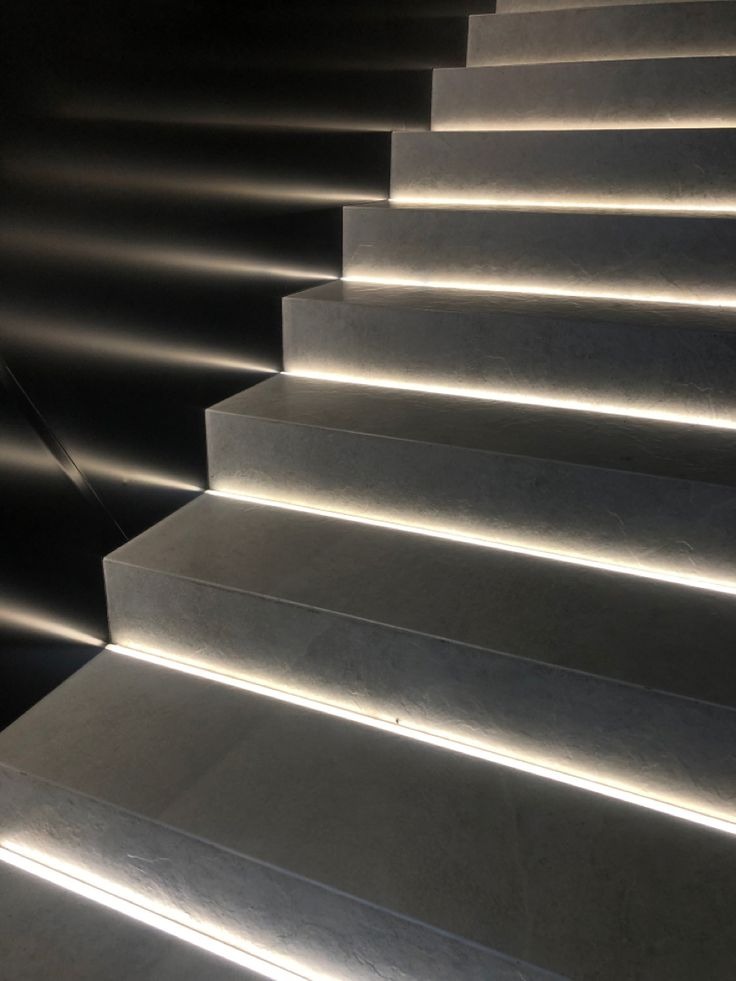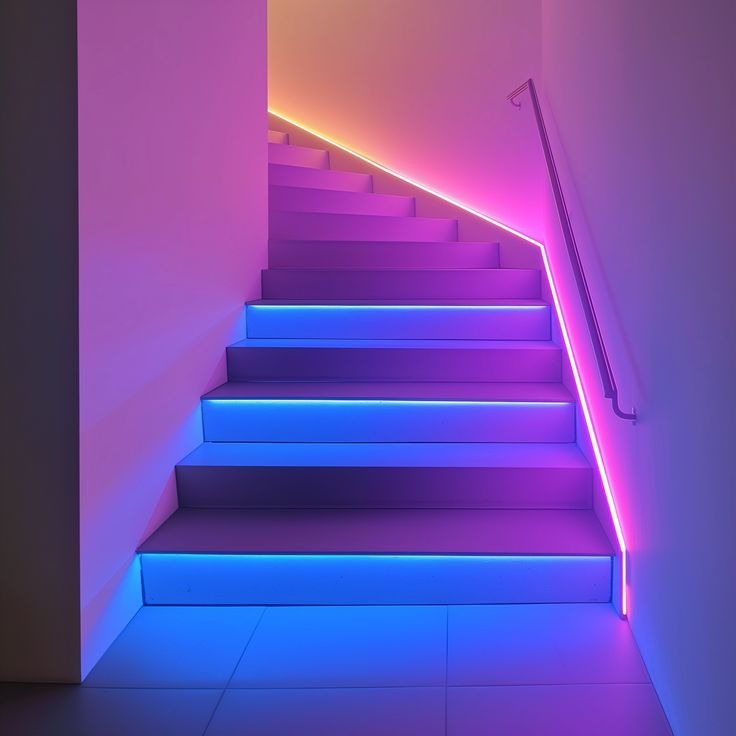Stair lighting is an important aspect of interior and exterior design that not only adds to the beauty of the environment, but also plays a fundamental role in ensuring the safety of people. Stairs, as one of the most used components of a building, require proper lighting to minimize the risks caused by darkness or insufficient light. In designing stair lighting, the use of various light sources, such as linear lights, hidden halogens, or LED strips, helps to create a pleasant and functional space. Smart selection of the type and intensity of light can have a significant impact on the visual effect, energy savings, and improved security of the building. As a result, stair lighting is a combination of functionality and aesthetics that can create a different and eye-catching space when considered.

How does stair lighting improve safety and aesthetics?
Stair lighting, with the right combination of design and technology, helps improve safety and aesthetics. Here’s how it impacts both aspects:
1. Improve safety
- Reduce the risk of falls and accidents: Proper lighting makes the edges and surfaces of stairs clearly visible, especially in low-light environments or at night.
- Path guidance: Lighting can define the path of movement and prevent confusion or mistakes when going up and down.
- Provide uniform lighting: Using lights of appropriate intensity, without annoying shadows or blind spots, provides better visibility for people.
- Possibility of using motion sensors: Installing lights that turn on and off with movement ensures instant lighting while preventing excessive energy consumption.
2. Improve aesthetics
- Create attractive visual effects: Using linear lights or colored LEDs can turn stairs into a prominent point in the interior or exterior design of a building.
- Create a sense of depth and dimension: Accurate lighting can showcase the depth and dimension of stairs and give the space a sense of dynamism and modernity.
- Coordinate with interior decoration: Choosing the color and type of lighting can coordinate with other interior design elements and create a unique space.
- Variety in lighting style: From hidden lights to wall and under-stair lights, each one gives a special style and effect to the space.
In general, stair lighting not only ensures the safety of people, but also, with smart design, can multiply the visual and functional value of the space.

Choosing the color and intensity of light in stair lighting
The choice of color and intensity of light in stair lighting plays an important role in creating a safe and beautiful space. These two factors have a great impact on the visual and functional experience of the environment. Here, how to choose each of these factors is examined:
1. Choosing the color of light
The color of light has a great impact on the atmosphere and surroundings and should be chosen according to the needs and overall design of the space:
- Cool White: This type of light (with a color temperature between 4000 and 6500 Kelvin) is suitable for modern and industrial spaces. Cool light creates more clarity and is suitable for stairs in spaces that require more precision and safety.
- Warm White: This color of light (with a color temperature between 2700 and 3000 Kelvin) creates a pleasant and comfortable space. For interior stairs in the house or spaces with classic decoration, warm light is an ideal choice. This color of light makes the space seem warmer and more inviting.
- Neutral White: Lights with a color temperature of around 3500 Kelvin have a balance between cool and warm and are suitable for spaces that resemble natural light. This light is effective for stairs in spaces that have a combination of modern and classic design.
- Colored light or colored LEDs: In some cases, using colored lights (such as red, blue or green) to illuminate stairs can create attractive visual effects. These colors are usually used for specific spaces or as a decorative element.
2. Choosing light intensity
Light intensity is also another key factor in stair lighting that should be given special attention:
- Appropriate light intensity for safety: The light intensity should be sufficient so that all parts of the stairs, including edges and surfaces, are clearly visible. For this purpose, using softand uniform lights that do not create sharp shadows is the best option.
- Soft or soft light: Soft, low-intensity lights are suitable for indoor spaces, as they create a calm and pleasant atmosphere. These lights should not be so intense that they irritate the eyes or create dangerous shadows.
- Focused or direct lights: If you need precise and bright lighting for specific parts of the stairs (such as LED strips under the stairs or focused halogens), the light intensity should be increased so that these parts are clearly visible.
- Adjust the light intensity according to the time of day: During the day, less light intensity may be needed, but at night or in dimly lit spaces, the light intensity should be increased enough to ensure safety.

Types of lights suitable for lighting building stairs
1. LED Linear Lights
- Features: These lights are designed as flexible strips and can be installed along the length of the stairs.
- Application: Install under the edge of the stairs, under the railing or along the side of the wall to create uniform and modern lighting.
Advantages:
- Low energy consumption.
- Ability to adjust the color and intensity of the light.
- Minimalist design and high aesthetics.
2. Small wall lights
- Features: Recessed or surface-mounted lights that are installed on the side walls of stairs.
- Application: Used to create indirect lighting and emphasize the path of movement.
Advantages:
- Focused and soft lighting.
- Prevents the creation of annoying shadows.
- Suitable for indoor and outdoor spaces.
3. Recessed Lights
- Features: These lights are hidden under the stairs or in the side walls.
- Application: Create elegant and attractive lighting where the light source is not visible.
Advantages:
- Modern and stylish appearance.
- Reduced risk of damage to the lights due to being hidden.
- Suitable for modern and minimalist stairs.
4. Step Lights
- Features: These lights are specifically designed for stair lighting and are installed at the front or edge of the stairs.
- Application: Used to illuminate each step individually.
Advantages:
- Focuses light on the surface of each step.
- Increased safety at night.
- Versatile design and ability to coordinate with architectural style.

 English
English العربية
العربية

















